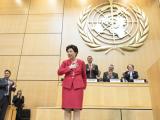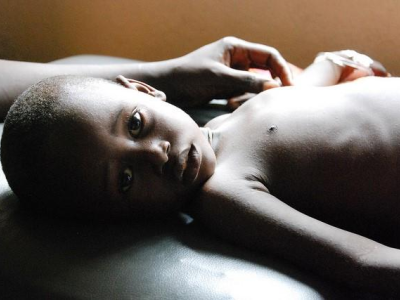Another large insurer vows to cover H1N1 vaccine administration
Minneapolis-based UnitedHealth Group (UNH), one of the largest US health insurance companies, announced yesterday it would cover administration of the novel H1N1 vaccine for all its members, even if their benefit plans do not usually cover immunizations. Earlier this month, a trade association of health insurance companies told the CDC that insurers would generally cover administration of the vaccine for their members.
http://www.unitedhealthgroup.com/newsroom/news.aspx?id=71555861-bc9c-4ad5-b8ad-2b4c5adaed58
Aug 20 UHC announcement
WHO official predicts 'explosion' of H1N1 cases this fall
A World Health Organization (WHO) official speaking in Beijing today said he expects to see an "explosion in case numbers" this fall when novel H1N1 virus activity picks up again in the northern hemisphere, the Associated Press reported. Shin Young-soo, the WHO's Western Pacific director, said cases in many countries could double every 3 to 4 days. But a US CDC official said that while vigilance is needed, fall outbreaks might resemble only a bad flu season.
Flu fatality study finds half of patients had underlying conditions
A review by French researchers of 574 novel flu deaths reported globally through mid July found that about half involved people with underlying conditions, most notably pregnancy and obesity. Reporting in the latest issue of Eurosurveillance, they said more research is needed to explore if other conditions contribute to higher death rates in obese patients. Though older people seem to have some immunity, the group found that elderly patients who had novel flu infections were more likely to die.
http://www.eurosurveillance.org/ViewArticle.aspx?ArticleId=19309
Aug 20 Eurosurveillance study
US death toll from H1N1 virus rises to 522
The Centers for Disease Control and Prevention (CDC) recorded 7,963 hospitalizations and 522 deaths attributed to novel H1N1 flu as of the end of last week, up from 7,511 hospital cases and 477 deaths a week earlier, Dr. Jay Butler of the CDC reported at a news conference today. Butler said the overall level of flu activity was low, but two states, Alaska and Maine, still had widespread activity. Those two states plus Hawaii and South Carolina had widespread activity a week earlier.
http://www.cdc.gov/flu/weekly/fluactivity.htm/?date=082109
CDC flu surveillance page
Chile finds novel flu virus in turkeys
Chile's agriculture ministry yesterday reported an outbreak of novel H1N1 flu at two turkey farms west of Santiago, the first such report in birds, Reuters reported. The farms were quarantined on Aug 13 after a change in egg production prompted testing. So far officials have found no further spread. Dr Anthony Fauci, director of the National Institute of Allergy and Infectious Diseases, said at a press conference today that the finding was interesting but not surprising or worrisome.
http://thestar.com.my/news/story.asp?file=/2009/8/21/worldupdates/2009-08-21T102730Z_01_NOOTR_RTRMDNC_0_-418790-3&sec=Worldupdates
Aug 21 Reuters story
WHO says cases declining in temperate parts of southern hemisphere
H1N1 flu cases in temperate areas of the southern hemisphere are declining, except South Africa, the WHO reported in a revised situation update today. But cases are increasing in tropical parts of Asia that are entering their monsoon season, such as India. The WHO expects the new strain to dominate the early part of the northern hemisphere's flu season. Twelve oseltamivir-resistant cases have been reported. The global H1N1 death toll has reached 1,799, with 177 countries confirming cases.
http://www.who.int/csr/don/2009_08_21/en/index.html
Aug 21 WHO revised situation update
Study says flu vaccination should target kids and their parents
A modeling study to assess flu vaccine allocation strategies found that immunizing school children and adults their parents' age, 30 to 39, might be optimal, researchers reported in Science Express yesterday. Their rationale is that school children are responsible for most flu transmission and that their parents spread the virus to the wider community. The authors wrote that CDC recommendations for seasonal and novel flu vaccination don't fully address those transmission factors.
http://www.sciencemag.org/cgi/content/abstract/1175570
Aug 20 Science Express abstract


















